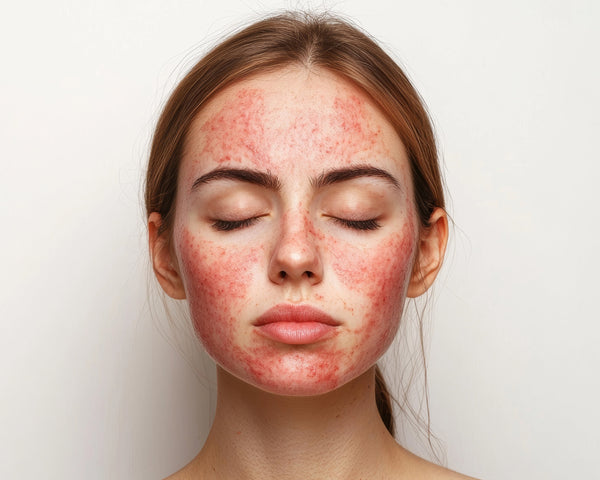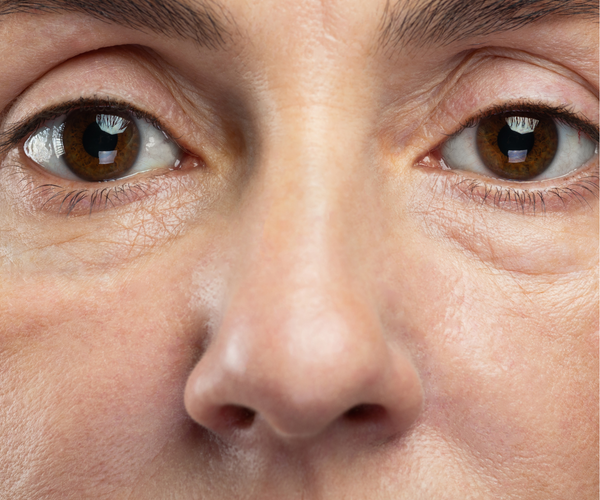How to Determine Your Skin Type: A Comprehensive Guide

How to Determine Your Skin Type: A Comprehensive Guide.
Knowing your skin type is the first step to building an effective skincare routine. Using the wrong products can lead to irritation, breakouts, and other skin problems. This guide will walk you through how to determine your skin type accurately, so you can tailor your skincare to your unique needs.
Understanding the Different Skin Types
There are several common skin types, each with its own characteristics:
- Normal Skin: This balanced skin type has minimal blemishes, fine pores, good elasticity, and a healthy glow. It's rarely dry or oily.
- Oily Skin: Oily skin produces excess sebum, leading to a shiny appearance, enlarged pores, and a tendency towards breakouts.
- Dry Skin: Dry skin lacks sufficient sebum, resulting in tightness, flakiness, and a rough texture. It's often sensitive and prone to irritation.
- Combination Skin: Combination skin displays characteristics of both oily and dry skin. Commonly, the T-zone (forehead, nose, and chin) is oily, while the cheeks are dry or normal.
- Sensitive Skin: Sensitive skin is easily irritated by products, environmental factors, or even water temperature. It may react with redness, itching, burning, or stinging.
The Patch Test Method: The Most Accurate Approach
The patch test is the most reliable way to identify your skin type. It involves cleansing your face and waiting for at least 30 minutes for your skin to return to its natural state. Then, follow these steps:
- Cleanse: Gently cleanse your face with a mild, fragrance-free cleanser. Avoid using any other skincare products before the test.
- Wait: Wait at least 30 minutes to allow your skin to settle.
- Observe: After 30 minutes, examine your skin closely without touching it. Note the following:
- Shine: Is your skin shiny in certain areas (T-zone)?
- Tightness: Do you feel any tightness or dryness?
- Roughness: Does your skin feel rough or flaky?
- Blemishes: Are there any visible blemishes or pores?
- Assess: Based on your observations, determine which skin type best describes your skin. This can help you choose the appropriate skincare products that are suited for your skin type.
The Bare-Face Method: A Simpler Approach
If you don't have time for a full patch test, you can try the bare-face method. This involves simply observing your skin after washing your face and not applying any makeup or skincare products for several hours. Look for the same indicators mentioned above (shine, tightness, roughness, blemishes).
Understanding Your Skin's Needs
Once you've determined your skin type, you can start choosing skincare products that address its specific needs. For example, oily skin benefits from oil-free and mattifying products, while dry skin needs moisturizing and hydrating formulations. Sensitive skin requires gentle, hypoallergenic products that are fragrance-free and non-comedogenic (won't clog pores).
Factors Affecting Skin Type
Your skin type can fluctuate due to various factors, including:
- Hormones: Fluctuations in hormones, especially during puberty, pregnancy, and menopause, can affect sebum production.
- Weather: Hot and humid weather can increase oil production, while cold, dry weather can dry out your skin.
- Medications: Certain medications can have side effects that affect your skin's condition.
- Diet: A healthy diet can contribute to healthy skin, while poor nutrition can negatively impact it.
- Stress: Stress can exacerbate skin problems and worsen existing conditions.
When to See a Dermatologist
If you're experiencing persistent skin issues, such as severe acne, persistent dryness, or reactions to products, it's crucial to consult a dermatologist. A dermatologist can provide a professional diagnosis and recommend appropriate treatment options.
Conclusion
Determining your skin type is a critical first step toward achieving healthy, radiant skin. By understanding your skin's unique needs, you can develop a personalized skincare routine that keeps your skin looking and feeling its best. Remember that your skin type can change over time, so it's important to reassess it periodically.




